Medidas de dispersión
Introducción a la estadística

George Boorman
Curriculum Manager, DataCamp
¿Qué es la dispersión?
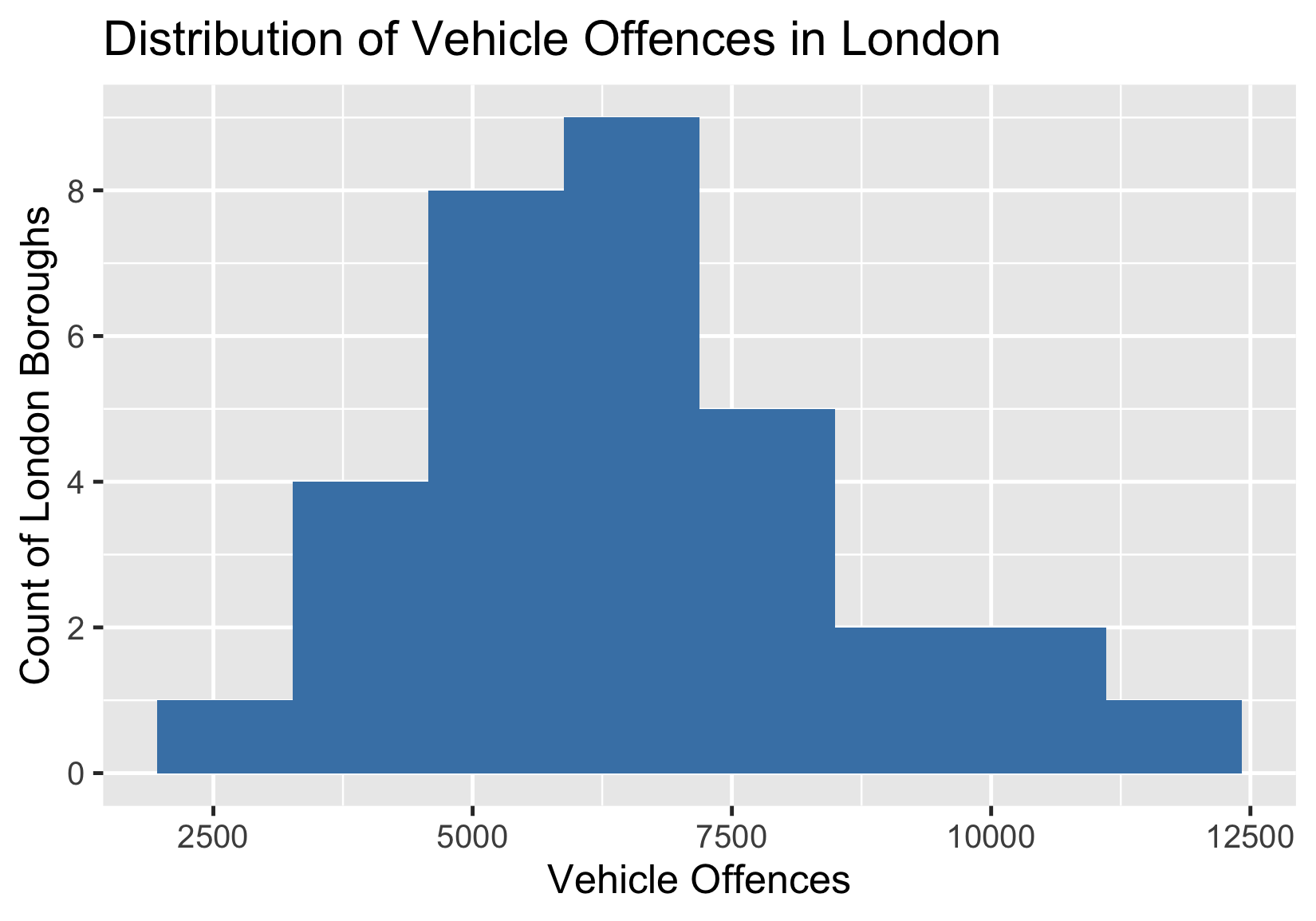
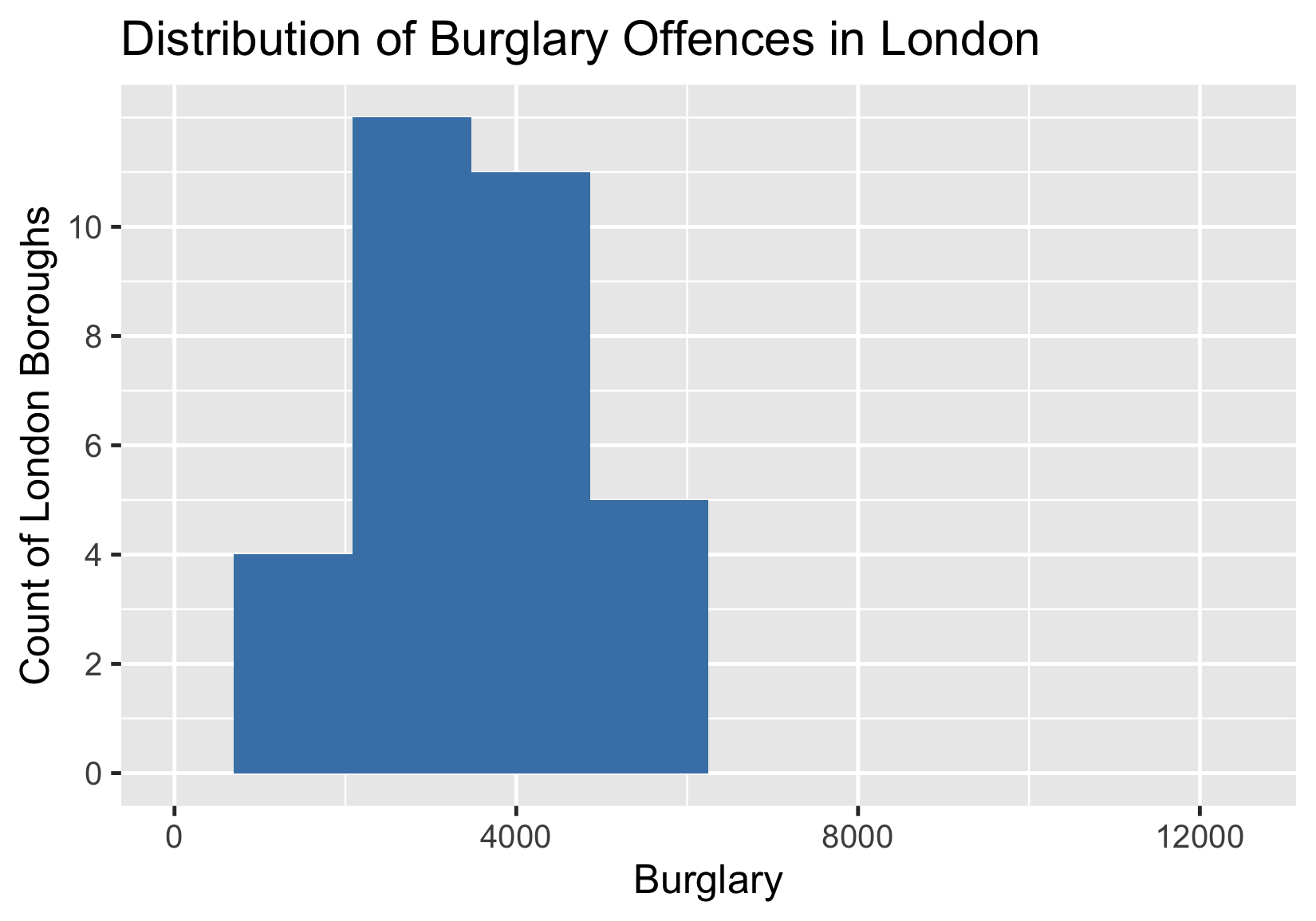
¿Por qué es importante la dispersión?
- La dispersión mide la variedad de los datos.
Las camisetas suelen costar 30 USD
- El coste puede estar entre 10 y 200 USD.
- ¿Qué probabilidad hay de que una cueste 30 USD?
Si las camisetas costaran entre 20 y 50 USD:
- ¿Cambia esto la probabilidad de encontrar una por 30 USD?

1 Crédito de la imagen: https://unsplash.com/@uyk
Rango
${rango} = máximo - mínimo$
${rango(Robos)} = 5183 - 1432$
${rango(Robos)} = 3751$
| Municipio | Robo con allanamiento de morada |
|---|---|
| Tower Hamlets | 5183 |
| Hackney | 5079 |
| Barnet | 5067 |
| ... | ... |
| Sutton | 1815 |
| Bexley | 1583 |
| Kingston upon Thames | 1432 |
Varianza
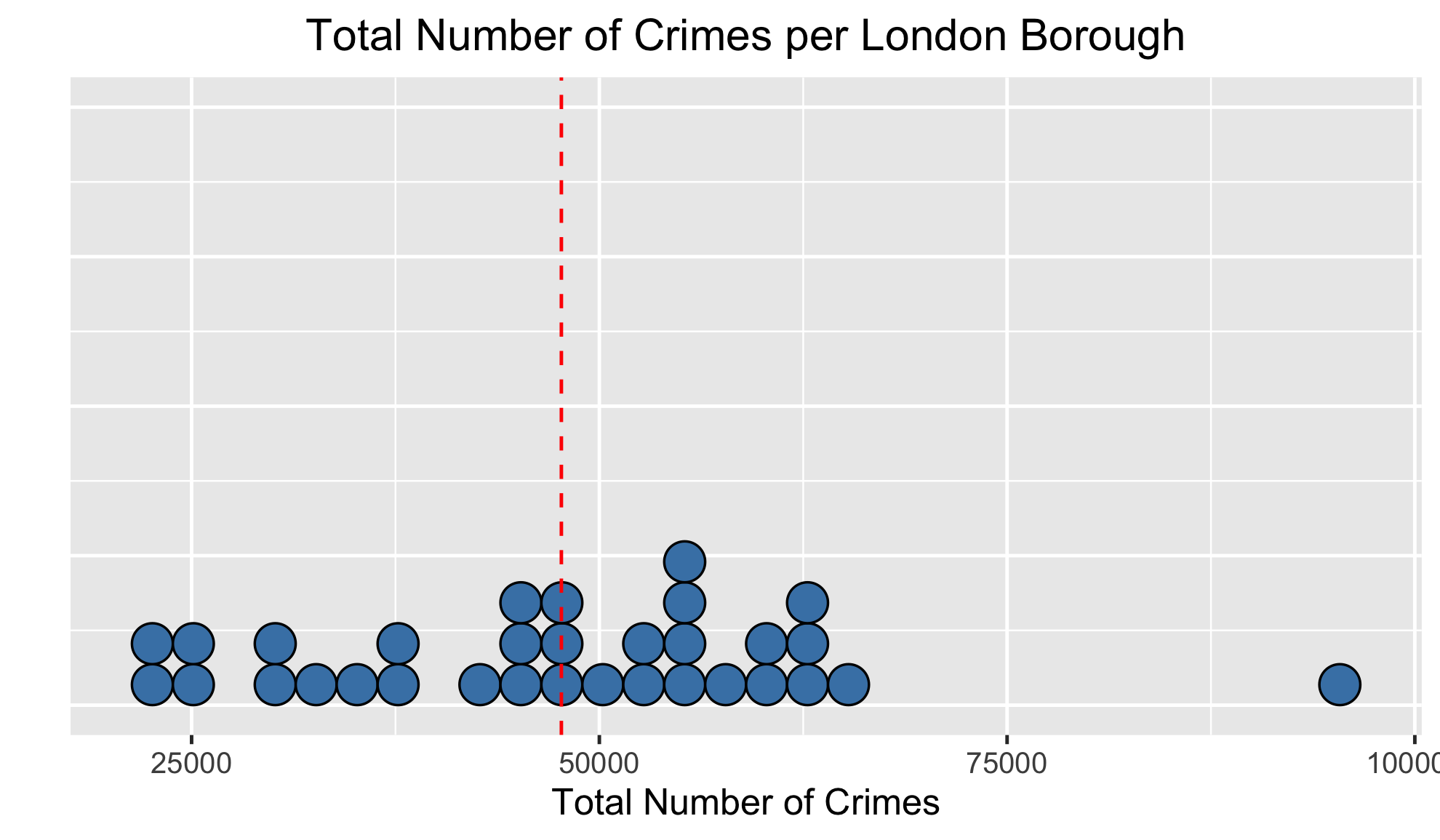
Varianza
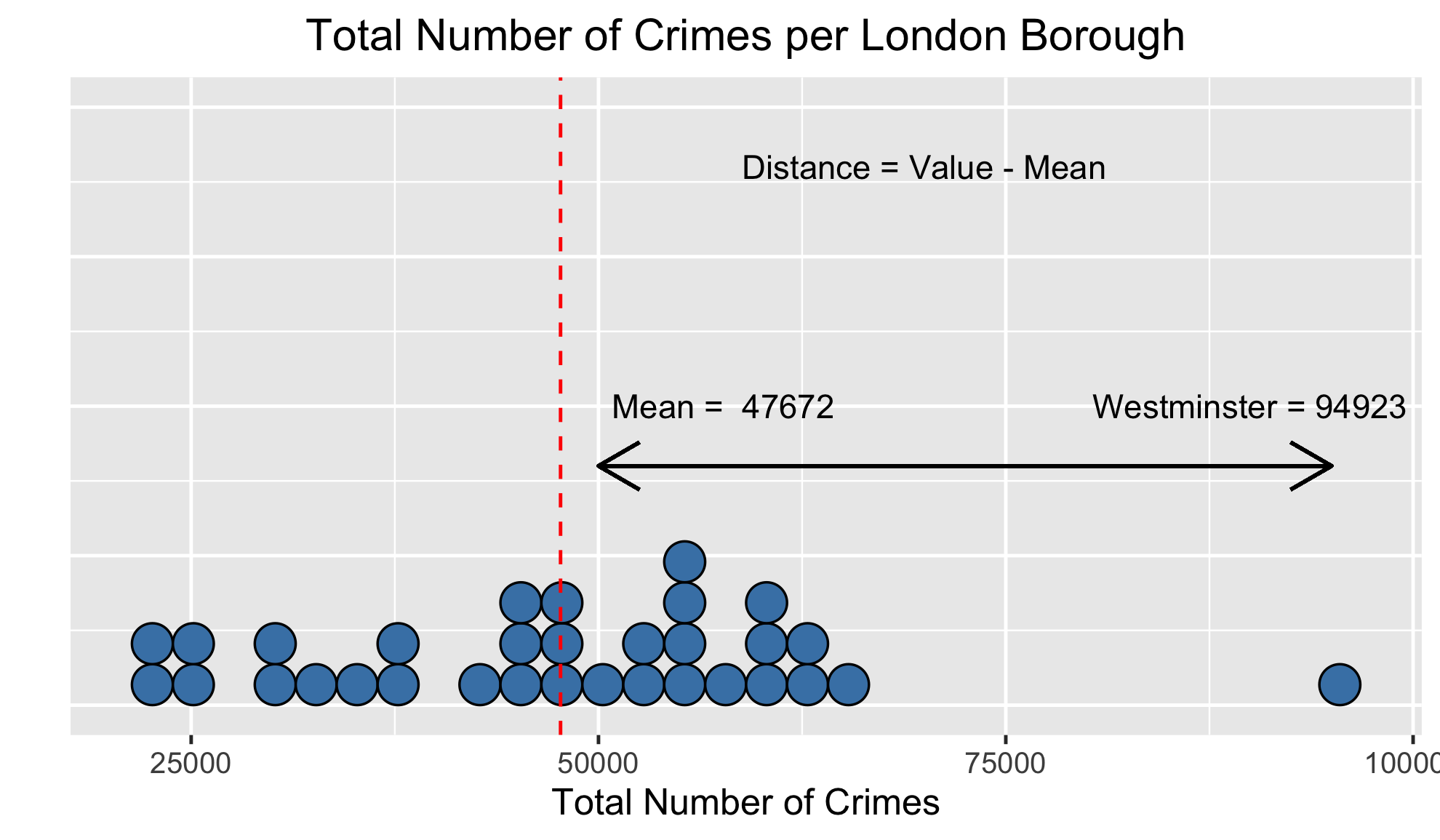
Varianza
| Municipio | Delitos totales | Media | Distancia |
|---|---|---|---|
| Barking y Dagenham | 37 939 | 47 672 | -9733 |
| Barnet | 52 421 | 47 672 | 4749 |
| Bexley | 29 285 | 47 672 | -18 387 |
| Brent | 55 465 | 47 672 | 7793 |
| Bromley | 42 982 | 47 672 | 4690 |
| Camden | 54 806 | 47 672 | 7134 |
| ... | ... | ... | ... |
| Total | 1 525 492 | 1 525 492 | 0 |
Varianza
| Municipio | Delitos totales | Media | Distancia | Distancia al cuadrado |
|---|---|---|---|---|
| Barking y Dagenham | 37 939 | 47 672 | -9733 | 94 731 289 |
| Barnet | 52 421 | 47 672 | 4749 | 22 553 001 |
| Bexley | 29 285 | 47 672 | -18 387 | 338 081 769 |
| Brent | 55 465 | 47 672 | 7793 | 60 730 849 |
| Bromley | 42 982 | 47 672 | 4690 | 21 996 100 |
| Camden | 54 806 | 47 672 | 7134 | 50 893 956 |
| ... | ... | ... | ... | ... |
| Total | 1 525 492 | 1 525 492 | 0 | 7 509 750 824 |
Varianza
$${varianza(total \ delitos)} = \frac{7 509 750 824}{32}$$
$${varianza(total \ delitos)} = \ 234 679 713$$
Desviación típica
${desviación \ típica(total \ delitos)} = {\sqrt( varianza(total \ delitos))}$
${desviación \ típica(total \ delitos)} = {\sqrt(234 679 713)}$
${desviación \ típica(total \ delitos)} = 15 319,26$
- Desviación típica cercana a cero = datos agrupados alrededor de la media
Desviación típica en un histograma
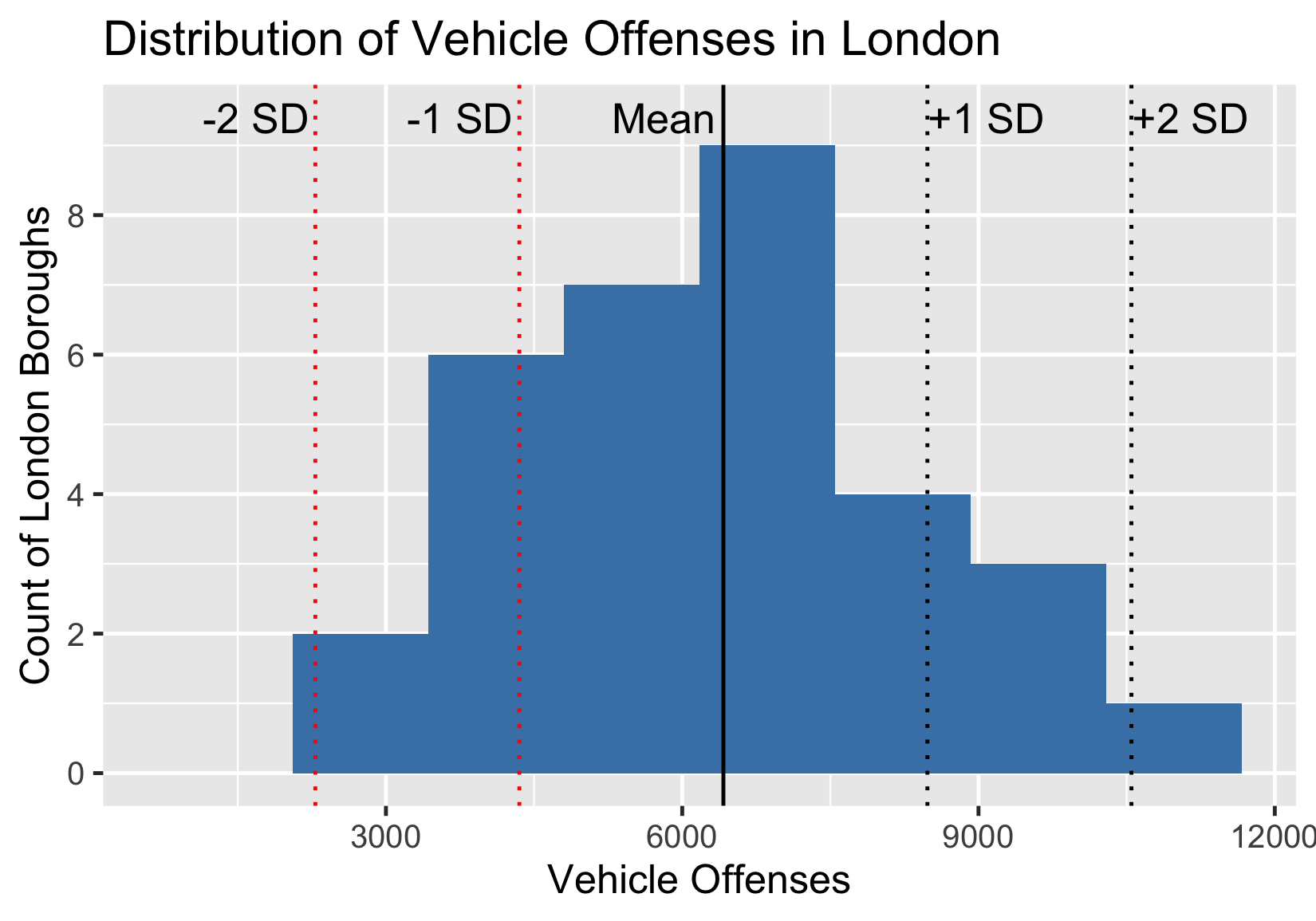
Cuartiles
- Cuartiles:
- Se dividen los datos en cuatro partes iguales.
| Delito | 0 % | 25 % | 50 % | 75 % | 100 % |
|---|---|---|---|---|---|
| Robo con allanamiento de morada | 1432,00 | 2681,75 | 3416,50 | 4392,00 | 5183,00 |
| Asalto | 363,00 | 895,75 | 1354,50 | 1976,50 | 4156,00 |
| Robo | 4090,00 | 7739,75 | 9624,00 | 12 059,00 | 40 278,00 |
| Infracciones de tráfico | 2143,00 | 4838,25 | 6424,50 | 7520,75 | 11 292,00 |
Cuartiles
- Cuartiles:
- Se dividen los datos en cuatro partes iguales.
| Delito | 0 % | 25 % | 50 % | 75 % | 100 % |
|---|---|---|---|---|---|
| Robo con allanamiento de morada | 1432,00 | 2681,75 | 3416,50 | 4392,00 | 5183,00 |
| Asalto | 363,00 | 895,75 | 1354,50 | 1976,50 | 4156,00 |
| Robo | 4090,00 | 7739,75 | 9624,00 | 12 059,00 | 40 278,00 |
| Infracciones de tráfico | 2143,00 | 4838,25 | 6424,50 | 7520,75 | 11 292,00 |
- Segundo cuartil (50 %) = mediana
Diagramas de caja
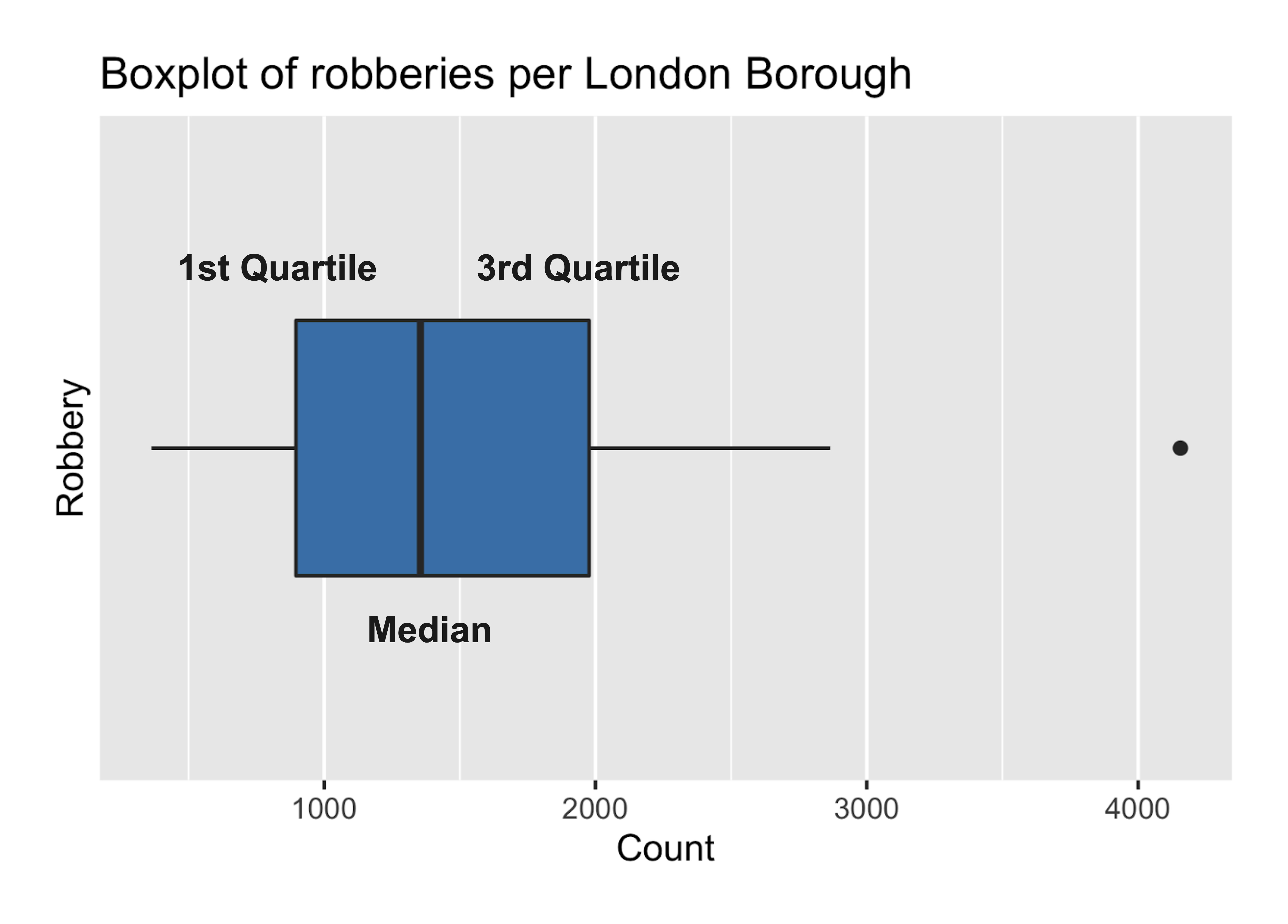
Intervalo intercuartílico (IQR)
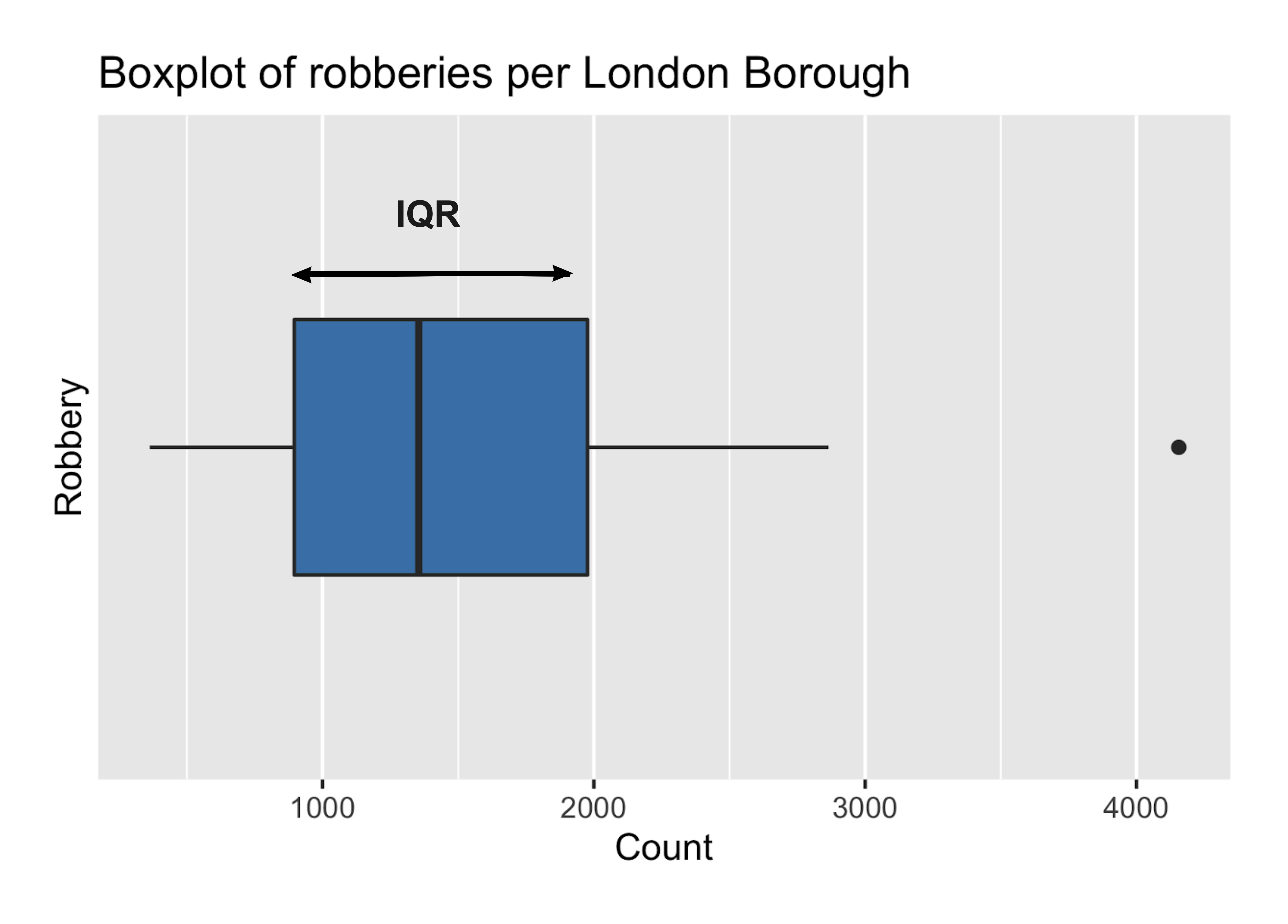
- El IQR se ve menos afectado por los valores extremos
IQR = tercer cuartil - primer cuartil
IQR = 1976,50 - 895,75
IQR = 1080,75
¡Vamos a practicar!
Introducción a la estadística

